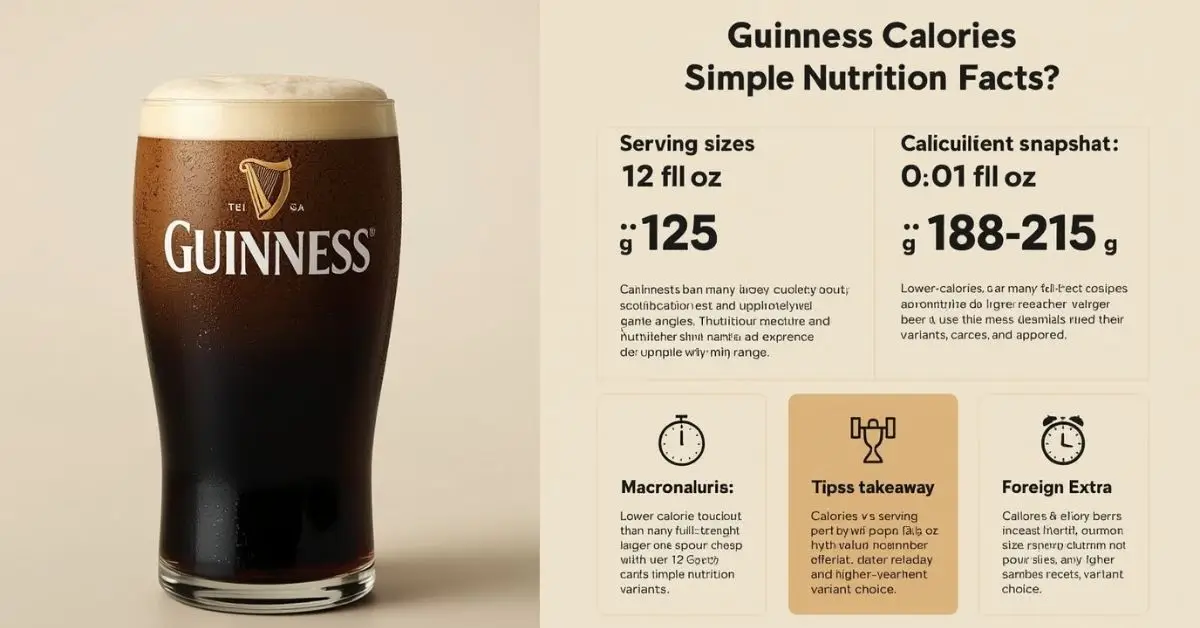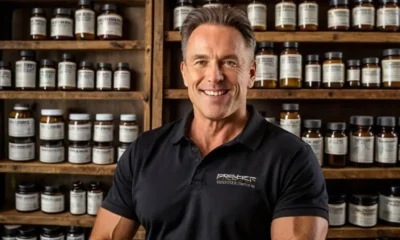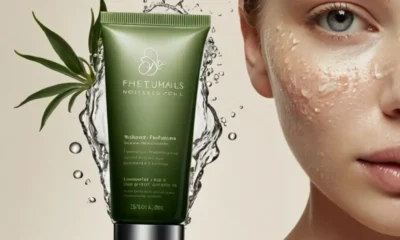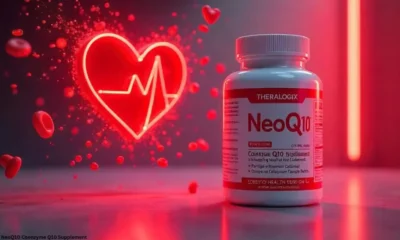GENERAL
Bright Heart: Redefining Mental and Addiction Care

Bright Heart Health has emerged as a transformative force in the realm of telemedicine, offering a comprehensive, accessible, and expert-led approach to behavioral healthcare. As technology reshapes treatment delivery, this virtual solution leads with compassion, efficiency, and expert care for individuals battling mental illness, substance use disorders, and chronic conditions—without the barriers of physical location or social stigma.
What Is Bright Heart Health?
Bright Heart Health is a specialized telehealth provider delivering behavioral healthcare through secure, HIPAA-compliant virtual consultations. It connects patients with licensed clinicians, therapists, and addiction specialists using digital platforms.
Primarily known for its treatment of opioid use disorder (OUD), eating disorders, chronic pain, and mental health conditions, the service offers a lifeline for those in need of immediate and discreet support. Its virtual format empowers patients to engage in recovery without disrupting their daily lives.
Growth of Digital Behavioral Health
Virtual behavioral health has surged over the past decade. With increased awareness of mental health, geographical disparities, and stigma, more people are opting for remote care. The American Psychological Association reports that telepsychology use has grown by over 70% since 2017.
This model, which is core to Bright Heart Health’s success, eliminates many traditional barriers to treatment. The result is more timely interventions and better overall outcomes.
Core Features of the Service
Virtual Opioid Recovery Program
This flagship service delivers medication-assisted treatment (MAT), including Suboxone prescriptions, entirely online. It includes regular virtual appointments, counseling, and peer support groups—making treatment accessible within hours instead of weeks.
Eating Disorder Management
This platform provides expert-led care for those suffering from anorexia, bulimia, and binge eating disorder. Patients receive individualized care plans involving nutritionists and behavioral therapists.
Holistic Pain Management
Instead of relying solely on medications, the program incorporates cognitive-behavioral therapy (CBT), mindfulness strategies, and physical wellness coaching to support individuals dealing with chronic pain.
Comparison Table: How Virtual Behavioral Health Services Compare
| Feature | Bright Heart Health | In-Person Clinics | App-Based Therapy Tools | Public Sector Providers | Self-Guided Wellness Apps |
| Cost | Moderate | High | Moderate | Free/Low-Cost | Low |
| Speed of Access | Immediate (24–48 hours) | Days to Weeks | Same-Day | Often Long Wait Times | Instant |
| User Experience | Seamless & Intuitive | Depends on Location | Easy, Some Automation | Basic and Institutional | Very Basic |
| Confidentiality | End-to-End Encrypted | Partially Confidential | Varies | Standard Protection | High |
| Care Quality | Licensed Experts | Licensed Staff | Sometimes Coaches | Licensed But Overburdened | No Clinical Oversight |
Who Is This Service Designed For?
Working Adults
Professionals often delay mental healthcare due to rigid schedules. This remote model offers before and after-work appointments, aligning care with daily life.
Rural and Remote Residents
People living in underserved areas benefit the most. They can now reach qualified addiction specialists and therapists regardless of their physical location.
Individuals Seeking Privacy
People with eating disorders or substance issues often fear judgment. With this virtual platform, they can receive quality care in total privacy.
Key Advantages
Ease of Access
With just a device and internet connection, users can consult certified professionals from their home or office. This approach reduces missed appointments and promotes consistency.
Qualified and Specialized Staff
Patients receive care from board-certified clinicians trained in trauma-informed, addiction-sensitive, and adolescent-specific therapies.
Evidence-Based Practices
All treatments use validated methods such as CBT, dialectical behavior therapy (DBT), and medication-assisted treatment for addiction recovery.
Ongoing Monitoring and Support
Unlike short-term interventions, this program includes continuous check-ins, progress tracking, and support group integration for long-term success.
Privacy and Data Security
All video calls, chats, and medical records are protected by strong encryption protocols. This ensures that every interaction remains confidential. The system complies with all major privacy laws, including HIPAA.
Patients are also encouraged to engage in private journaling and secure messaging, helping them remain connected to their care team between appointments.
Affordability and Coverage
Most insurance providers, including Medicaid in participating states, cover part or all of the treatment costs. Self-pay options are available for those without insurance, often making it more economical than traditional therapy.
Cost-effectiveness is one of the platform’s biggest draws, offering access to care that is both affordable and high-quality.
Limitations and Challenges
Digital Divide
Some patients lack access to high-speed internet or the necessary devices. This remains a barrier in certain regions.
Licensing Restrictions
Due to varying state regulations, not all clinicians can provide services across state lines. Users must check regional availability.
Tech Literacy
Elderly patients or those unfamiliar with smartphones or laptops may initially find the setup overwhelming, though onboarding support is available.
Patient Experiences
“I was hesitant at first, but this platform changed my life. I’ve been sober for over a year now without ever setting foot in a clinic.” — Alex T., Denver
“The support I received for my binge eating disorder was immediate and ongoing. The specialists made me feel safe and understood.” — Dana S., Phoenix
Such reviews demonstrate the impact and reach of virtual mental health services.
Setting Industry Standards
This provider isn’t just another telehealth app—it sets the benchmark for digital behavioral care. Many competitors rely on brief sessions or AI-driven bots. In contrast, this model emphasizes licensed professionals, tailored care, and long-term engagement.
Dr. Felicia Matthews, a behavioral science expert, notes, “Virtual clinics like this are bridging the gap between need and access in ways traditional institutions never could.”
Addressing America’s Addiction Crisis
With over 100,000 overdose deaths annually in the U.S., timely intervention has never been more critical. This service delivers virtual opioid treatment with rapid turnaround, saving lives by reducing delays and providing medication promptly.
Their model is especially effective in states hardest hit by the opioid epidemic, such as West Virginia, Ohio, and Kentucky.
Support for Adolescents
Teen mental health is in crisis. This virtual solution provides age-appropriate therapy for conditions such as anxiety, depression, and behavioral issues. Parents are involved through optional coaching and progress reports.
Therapists trained in adolescent psychology ensure that sessions are not only effective but relatable for younger audiences.
Customized Recovery Programs
Every individual is unique, and so is their path to recovery. Patients undergo a comprehensive assessment followed by a personalized plan that evolves with their needs. These dynamic care models enhance patient engagement and recovery outcomes.
Instead of a one-size-fits-all model, the program adapts therapy frequency, medication regimens, and support systems over time.
Peer and Group Support
Along with individual counseling, the service offers virtual support groups. Group therapy enhances motivation and creates community—critical for long-term recovery from addiction and eating disorders.
Such sessions are moderated by licensed therapists and follow structured themes for maximum benefit.
Looking to the Future
As telehealth legislation expands and digital literacy increases, services like this are poised to become the standard for behavioral health care. More partnerships with schools, employers, and insurance providers are expected to emerge.
Their commitment to science-backed methods, inclusive access, and emotional support puts them at the forefront of a healthcare revolution.
Conclusion
Bright Heart Health symbolizes the future of behavioral medicine—blending convenience with clinical excellence. In a world where mental health and addiction challenges are escalating, this model offers hope and healing on demand. It is not just a service—it’s a lifeline, reshaping how we access and experience care.
FAQs
What conditions are treated through a bright heart health behavioral health platform?
It treats addiction, eating disorders, anxiety, depression, and chronic pain, using licensed therapists and medical professionals.
How fast can I start my treatment in bright heart health?
Most patients begin within 24–48 hours after completing the online intake process.
Is this service covered by insurance?
Yes, many private insurers and Medicaid plans cover treatment. Self-pay plans are also available.
Can teenagers use bright heart health platforms?
Yes, adolescent-specific therapy is available with parental involvement and trained professionals.
Is the treatment really confidential?
Absolutely. All communication is encrypted and compliant with HIPAA regulations.
Do I need special equipment?
Just a smartphone, tablet, or computer with a webcam and internet access is sufficient for most users.
GENERAL
What Are Guinness Calories? Simple Nutrition Facts 2025

Ever wonder if your beloved pint is sneaking in more calories than you’d like? You’ve been there. I’ll help you understand [guinness calories] the smart way—no fluff, just real-world facts and easy clarity.
Quick Answer
A pint (16 oz) of Guinness Draught has about 210 calories (about 35 kcal per 100 ml). Calories come mainly from alcohol and carbs. Simple, direct, no guesswork.
What’s in a 12-oz Guinness Draught?
This tells you exactly what’s in a standard serving.
You’ll learn the facts fast:
- 12 oz (~355 ml) of Guinness Draught has 125 calories (Alcohol 11.2 g, carbs 10 g).
- That’s ~35 kcal per 100 ml for Guinness Draught or Extra Stout. A full pint rounds to ~210 calories total.
Key Intake: A full pint = ~210 kcal; most calories come from alcohol.
How Do Variants Stack Up?
See how different types compare no guessing here.
| Variant | Calories (per 12 oz) | Key Notes |
| Draught | ~125 kcal | Standard, smooth |
| Foreign Extra Stout | ~194 kcal | Rich, roasty |
| Baltimore Blonde Lager | ~167 kcal | Hoppy, lighter |
| Guinness Smooth (per 100 ml) | ~57 kcal (~217 kcal pint) |
Key Intake: Higher ABV = more calories. Pick the one that fits your macro budget.
Why Calories Vary Breakdown by Source

Learn where the calories come from, not just numbers.
- Alcohol has 7 kcal per gram; in Draught, ~62% of calories are from alcohol.
- Carbs add the rest—around 10 g in a 12-oz Draught (~40 kcal).
Key Intake: Calories split roughly 60% alcohol, 40% carbs.
Non-Alcoholic and Low-Cal Alternatives
Find choices when you want flavor without the calorie hit.
- Guinness 0: only 17 kcal per 100 ml (≈ 68 kcal per pint).
- Good picks if you’re tracking macros or avoiding alcohol.
Key Intake: Guinness 0 is a clever low-calorie swap for your pint fix.
What This Means for Dieters & Health-Mindful Drinkers
A quick guide to fit Guinness into your nutrition plan.
- A pint ~ 210 kcal is moderate—less than many craft ales (160–180 kcal).
- If counting macros, know: alcohol is the main calorie source.
Key Intake: It’s not “diet-friendly” but moderate and trackable.
Final Takeaway
This isn’t sugar-coated. If you’re watching your calories, understanding “guinness calories” means choosing wisely, knowing exactly what’s in your pint, and fitting it into your wellness plan like a smart decision, not a hidden cost.
FAQ’s
How many calories are in a pint of Guinness?
~210 kcal per pint, based on ~35 kcal per 100 ml.
What’s the calorie content of a 12-oz Guinness Draught vs Extra Stout?
Draught ~125 kcal; Extra Stout ~180–194 kcal.
Are there lower-calorie alternatives to Guinness stout?
Yes—Guinness 0 has only ~17 kcal per 100 ml (≈ 68 kcal per pint).
Guinness calories vs Bud Light: which is lower?
Guinness Draught (~125 kcal) is similar or slightly higher than Bud Light (~110 kcal).
How many calories per gram of alcohol are in Guinness?
Alcohol contributes 7 kcal per gram; ~60% of calories in Draught come from alcohol.
Calories in Guinness Draught nutritional facts explained?
~125 kcal from alcohol (78 kcal) + carbs (~40 kcal), plus ~1 g protein.
Is Guinness high in calories for a diet plan?
It’s moderate; track it, and it can fit in but be mindful of alcohol calories.
Expert Citations
- Healthline: Detailed breakdown of calories from alcohol vs carbs in Guinness Draught.
- Guinness.com: Official calorie counts across variants (Draught, Extra Stout, 0.0, etc.).
- Guinness product pages: Precise nutrition data for each variant – Draught, Foreign Extra Stout, Blonde, Smooth, etc.
GENERAL
Why the Rory Masters Collapse Still Matters Today (2025)

Golf can be cruel. One minute you’re leading the Masters, the next you’re fighting to hold it together. Rory Masters collapse moments have given fans drama, heartbreak, and unforgettable TV.
We’ve all seen it happen, the missed shots, the tense body language, the scoreboard slipping away. But why does it happen to a player as good as Rory McIlroy? Let’s break it down.
Quick Answer
The Rory Masters collapse refers to multiple high-profile moments at Augusta where Rory McIlroy lost his lead, most famously in 2011 when he shot 80 in the final round, and again in 2025 with late-round bogeys. Causes include mental pressure, course difficulty, and external distractions like slow play. Yet, Rory has also turned these failures into motivation, ultimately winning the Masters in 2025 to complete his career Grand Slam.
Rory McIlroy: Masters Career Profile
| Category | Details |
| Name | Rory McIlroy |
| Date of Birth | May 4, 1989 (age 36) (ESPN.com) |
| Hometown | Holywood, Northern Ireland (ESPN.com) |
| Turned Pro | 2007 (ESPN.com) |
| Masters Titles | 2025 (First win; career Grand Slam completed) (Reuters, The Washington Post) |
| Notable Collapses at Masters | 2011 final-round meltdown (80, from 4-shot lead) (Wikipedia) |
| Masters Attempts Before Win | 17 attempts at Augusta by 2025 (The Sun) |
| Other Major Wins | U.S. Open 2011, PGA Championship 2012 & 2014, Open Championship 2014 (Data Golf, Wikipedia, Reuters) |
| Total Career Wins (2025) | 44 total: 29 PGA Tour, 18 European Tour, others (Talksport) |
| Career Grand Slam | Achieved with 2025 Masters win; one of six to do so (Reuters, Talksport) |
| Signature Moment | Emotional collapse to celebrating Green Jacket after playoff win vs. Justin Rose (The Washington Post) |
| Key Strengths | Multiple Majors, career Grand Slam, long-time world No.1 (European Tour, Reuters) |
| Resilience & Legacy | Climbed back from 2011 collapse to claim Masters, completing a decade-long quest (The Scottish Sun, Reuters) |
2011 The Collapse That Started It All
The first big Rory Masters collapse came in 2011.
- Rory led by four shots after three rounds.
- On Sunday, Augusta’s pressure took over.
- He shot an 80 and finished tied for 15th.
2025 A New Collapse, Same Augusta Pressure
Fast forward to 2025. Rory was 4-under through 14 holes in Round 1.
- Then came bogeys on 15 and 16.
- A double bogey on 17 sealed the damage.
Paul McGinley, former Ryder Cup captain, called it a slow play distraction McIlroy couldn’t shake. This wasn’t the first time Rory felt Augusta’s mental toll.
Why Collapses Happen at Augusta
Definition:
Mental collapse in golf Majors is when focus, rhythm, and execution fall apart under tournament stress.
Augusta National tests more than swing mechanics. It pushes the mind to breaking point.
Key factors:
- Course design: punishes tiny errors.
- Crowd energy: amplifies every mistake.
- Mental game: pressure spikes near the finish.
Rory’s Redemption 2025 Masters Win
Here’s the twist: despite the early stumble, Rory fought back. By Sunday evening, he wore the green jacket.
- He became only the 6th golfer to complete the career Grand Slam delay McIlroy had chased for over a decade.
- His win proved collapse doesn’t have to define you.
What Fans and Players Can Learn
- Stay present: Focus on one shot at a time.
- Adapt fast: Don’t let a bad hole become a bad round.
- Pressure prep: Simulate high-stakes moments in practice.
Real-world note:
I’ve seen players choke in local tournaments because they never practiced the mental side. Rory’s story shows why it matters.
FAQs
Why is Rory McIlroy’s Masters collapse famous?
It’s remembered for how quickly a winning position turned into a blowout, especially in 2011 when he led by four shots.
How many times has Rory collapsed at the Masters?
At least twice in high-profile ways — 2011’s final-round meltdown and the 2025 early-round stumble.
What caused Rory’s 2025 collapse?
Analysts point to mental pressure and slow play distractions from his group.
Has Rory ever recovered from a Masters collapse?
Yes. He won the Masters in 2025, securing his career Grand Slam.
Expert Citations
- Paul McGinley — TalkSport: “Slow play affected Rory’s rhythm.”
- Golf.com — “Analyst says slow play led to Rory’s Masters collapse.”
- Wall Street Journal — “McIlroy completes career Grand Slam with 2025 Masters win.”
GENERAL
What to Know About Johnny Depp Island in the Bahamas

You’re curious, and honestly—so am I. What’s it like to own a slice of Caribbean magic, hidden away from prying eyes? Especially when that slice belongs to a Hollywood legend. Let’s cut through the noise and get real.
Quick Answer
Johnny Depp’s Island is called Little Hall’s Pond Cay. He bought it in 2004 for about $3.6 million. It spans roughly 45 acres and is 60 miles southeast of Nassau in the Bahamas. He still owns it as of mid-2025.
Where is Johnny Depp’s Island located?
Here’s what you’ll learn: Its geography, how big it is, and where it sits in paradise.
- Located in the Exuma Islands, Bahamas, about 60 miles southeast of Nassau (Tuko.co.ke – Kenya News, Market Realist, News).
- Covers roughly 45 acres (18 hectares), a sizable tropical property with six beaches (Tuko.co.ke – Kenya News, Newszetu).
It’s a mid-size tropical hideaway, a boat-ride from Nassau. Pure, quiet, untouched.
What’s the story behind its name and purchase?
Here’s what you’ll learn: Why Johnny Depp bought it, what he named parts of it, and how he transformed it.
- Johnny Depp Island was discovered while filming Pirates of the Caribbean. He bought it in 2004 for about $3.6 million (Vanity Fair, News, Homes & Gardens).
- The six beaches are named after his loved ones and mentors—Gonzo (Hunter S. Thompson), Lily Rose, Jack, Brando (Marlon Brando), and Paradis (Vanessa Paradis) (Vanity Fair, Market Realist, People.com).
- He built a ranch-style main house with 360° views, solar-powered guest structures, a bamboo yurt, and a beach house—low-key luxury meets eco-sensitivity (DDW, Tinseltown Tales, DMARGE, CEO Today).
What makes it a sanctuary—and does Depp still own it?
Here’s what you’ll learn: Why it’s meaningful to Johnny Depp and if he still owns it.
- Depp calls Johnny Depp Island “pure and beautiful” and says you can feel your “pulse drop” there—instant freedom (Vanity Fair, Newszetu, Tinseltown Tales).
- As of mid-2025, he still owns it despite rumors of a sale to J.K. Rowling (CEO Today).
Celebrity & luxury context
Here’s what you’ll learn: How it fits with celeb real-estate and pop culture.
- Johnny Depp Island sits among other Bahamas celebrity islands, near properties owned by Eddie Murphy and David Copperfield (Tuko.co.ke – Kenya News).
- The island has hosted Depp’s wedding to Amber Heard in 2015 and served as a detox retreat during difficult times (Glamour, DMARGE, Market Realist).
Takeaway
From celebrity news readers to luxury travellers to real-estate enthusiasts, Little Hall’s Pond Cay—better known as Johnny Depp Island—is a rare, personal hideout that blends Depp’s eclectic style with genuine peace. Based on real-world reports and Depp’s own words, this island is more than property—it’s sanctuary.
FAQ’s
Where is Johnny Depp’s island located?
A private island called Little Hall’s Pond Cay, in the Exuma chain, 60 miles southeast of Nassau, Bahamas.
What is the name of Johnny Depp’s private island?
It’s called Little Hall’s Pond Cay.
How much did Johnny Depp’s island cost?
He bought it for around $3.6 million in 2004.
Can you visit Johnny Depp’s island in the Bahamas?
No—access is strictly by invitation only.
What’s the history of Johnny Depp’s Little Hall’s Pond Cay?
He discovered it during Pirates of the Caribbean filming, bought it, built eco-homes, and still owns it as of 2025.
What are some luxury aspects similar to this island?
Think celebrity-owned private islands—secluded, bespoke retreats designed for quiet, high-end living.
Expert Sources
- Vanity Fair – Their coverage on Johnny Depp Island includes direct quotes and historical context from the actor himself. (vanityfair.com)
- People Magazine – Their article on Johnny Depp Island offers fact-checked property details and insider background. (people.com)
- Homes & Gardens – A respected home and lifestyle publication that provides credible real-estate insights, including luxury property features and valuations for celebrity-owned estates. (homesandgardens.com)
-

 GENERAL5 months ago
GENERAL5 months agoGary Brecka Supplements: Unlocking Peak Human Performance
-

 GENERAL5 months ago
GENERAL5 months agoActivia Yogurt Nutrition Facts You Shouldn’t Ignore
-

 HEART TIPS4 months ago
HEART TIPS4 months agoCommon Heart Home Health: Trusted Cardiac Care at Home
-

 GENERAL5 months ago
GENERAL5 months agoHealthy Living at Home for a Better You
-

 GENERAL5 months ago
GENERAL5 months agoWaterless Skincare: The Future of Potent, Eco-Friendly Beauty
-

 HEART TIPS5 months ago
HEART TIPS5 months agoTheralogix NeoQ10 Coenzyme Q10 Supplement – Heart Health
-

 HEART TIPS5 months ago
HEART TIPS5 months agoHeart Home Health Care: A Lifeline of Medical Excellence
-

 GENERAL5 months ago
GENERAL5 months ago12 oz Coke Nutrition Facts: What’s Really Inside?
